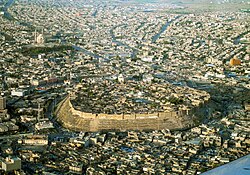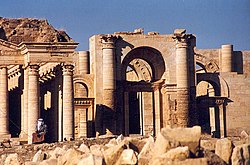Я«ѕЯ«░Я«ЙЯ«ЋЯ»ЇЯ«ЋЯ«┐Я«ЕЯ»Ї Я«ЅЯ«▓Я«ЋЯ«фЯ»Ї Я«фЯ«ЙЯ«░Я««Я»ЇЯ«фЯ«░Я«┐Я«»Я«ЋЯ»Ї Я«ЋЯ«│Я«ЎЯ»ЇЯ«ЋЯ«│Я»Ї
Я«ѕЯ«░Я«ЙЯ«ЋЯ»ЇЯ«ЋЯ«┐Я«ЕЯ»Ї Я«ЅЯ«▓Я«ЋЯ«фЯ»Ї Я«фЯ«ЙЯ«░Я««Я»ЇЯ«фЯ«░Я«┐Я«»Я«ЋЯ»Ї Я«ЋЯ«│Я«ЎЯ»ЇЯ«ЋЯ«│Я»Ї , Я«»Я»ЂЯ«ЕЯ»єЯ«ИЯ»ЇЯ«ЋЯ»І Я«еЯ«┐Я«▒Я»ЂЯ«хЯ«ЕЯ««Я»Ї Я«ѕЯ«░Я«ЙЯ«ЋЯ»ЇЯ«ЋЯ«┐Я«ЕЯ»Ї Я«ЋЯ»ђЯ«┤Я»ЇЯ«ЋЯ«БЯ»ЇЯ«Ъ 6 Я«фЯ«БЯ»ЇЯ«фЯ«ЙЯ«ЪЯ»ЇЯ«ЪЯ»ЂЯ«ЋЯ»Ї Я«ЋЯ«│Я«ЎЯ»ЇЯ«ЋЯ«│Я»ѕ Я«ЅЯ«▓Я«ЋЯ«фЯ»Ї Я«фЯ«ЙЯ«░Я««Я»ЇЯ«фЯ«░Я«┐Я«»Я«ЋЯ»Ї Я«ЋЯ«│Я«ЎЯ»ЇЯ«ЋЯ«│Я«ЙЯ«Ћ Я«ЁЯ«▒Я«┐Я«хЯ«┐Я«цЯ»ЇЯ«цЯ»ЂЯ«│Я»ЇЯ«│Я«цЯ»Ђ.[ 1] [ 2]
Рђа Я«ЁЯ«┤Я«┐Я«хЯ«┐Я«ЕЯ»Ї Я«хЯ«┐Я«│Я«┐Я««Я»ЇЯ«фЯ«┐Я«▓Я»Ї Я«ЅЯ«│Я»ЇЯ«│Я«хЯ»ѕЯ«ЋЯ«│Я»Ї
Я«цЯ»іЯ«▓Я»ЇЯ«▓Я«┐Я«»Я«▓Я»Ї Я«ЋЯ«│Я««Я»Ї
Я«фЯ«ЪЯ««Я»Ї
Я«ЁЯ««Я»ѕЯ«хЯ«┐Я«ЪЯ««Я»Ї
Я«хЯ«ЋЯ»ѕ
Я«фЯ«░Я«фЯ»ЇЯ«фЯ«│Я«хЯ»ЂЯ«╣Я»єЯ«ЋЯ»ЇЯ«ЪЯ»ЄЯ«░Я»Ї (Я«ЈЯ«ЋЯ»ЇЯ«ЋЯ«░Я»Ї )
Я«єЯ«БЯ»ЇЯ«ЪЯ»Ђ
Я«хЯ«┐Я«│Я«ЋЯ»ЇЯ«ЋЯ««Я»Ї
Я«ЁЯ«џЯ»ѓЯ«░Я»Ї
Irq Я«џЯ«▓Я«ЙЯ«хЯ»ЂЯ«цЯ»ЇЯ«цЯ»ђЯ«ЕЯ»Ї Я«єЯ«│Я»ЂЯ«еЯ«░Я«ЋЯ««Я»Ї35┬░27Рђ▓32Рђ│N 43┬░15Рђ▓35Рђ│E №╗┐ / №╗┐ 35.45889┬░N 43.25972┬░E №╗┐ / 35.45889; 43.25972 Я«фЯ«БЯ»ЇЯ«фЯ«ЙЯ«ЪЯ»ЇЯ«ЪЯ»ЂЯ«ЋЯ»Ї Я«ЋЯ«│Я««Я»Ї :IrqAsh 2003
Located on the Tigris and dating from the 3rd millennium BCE, Ashur was the first capital of the Assyrian Empire and the religious centre of the Assyrians. Following its destruction by the Babylonia ns, the city was briefly revived during the Parthia n period.[ 3]
Я«ЁЯ«░Я»ЇЯ«фЯ«┐Я«▓Я»Ї Я«ЁЯ«░Я«БЯ»ЇЯ««Я«ЕЯ»ѕ
Irq Я«ЁЯ«░Я»ЇЯ«фЯ«┐Я«▓Я»Ї Я«єЯ«│Я»ЂЯ«еЯ«ЋЯ«░Я««Я»Ї, Я«ѕЯ«░Я«ЙЯ«ЋЯ»ЇЯ«ЋЯ«┐Я«» Я«ЋЯ»ЂЯ«░Я»ЇЯ«цЯ«┐Я«ИЯ»ЇЯ«цЯ«ЙЯ«ЕЯ»Ї 36┬░11Рђ▓28Рђ│N 44┬░00Рђ▓33Рђ│E №╗┐ / №╗┐ 36.19111┬░N 44.00917┬░E №╗┐ / 36.19111; 44.00917 Я«фЯ«БЯ»ЇЯ«фЯ«ЙЯ«ЪЯ»ЇЯ«ЪЯ»ЂЯ«ЋЯ»Ї Я«ЋЯ«│Я««Я»Ї :<Cultural:IrqErb 2014
Situated on the top of a tell in Iraqi Kurdistan and overlooking the city of Я«ЁЯ«░Я»ЇЯ«фЯ«┐Я«▓Я»Ї , the Erbil Citadel constitutes a typical example of Ottoman-era urban-planning. In addition to its 19th century fortifications, the site also contains remains dating back to the Assyria n period.[ 4]
Я«ЁЯ«цЯ»ЇЯ«░Я«Й
Irq Я«еЯ«┐Я«ЕЯ«┐Я«хЯ»Є Я«єЯ«│Я»ЂЯ«еЯ«ЋЯ«░Я««Я»Ї35┬░35Рђ▓17Рђ│N 42┬░43Рђ▓06Рђ│E №╗┐ / №╗┐ 35.58806┬░N 42.71833┬░E №╗┐ / 35.58806; 42.71833 Я«фЯ«БЯ»ЇЯ«фЯ«ЙЯ«ЪЯ»ЇЯ«ЪЯ»ЂЯ«ЋЯ»Ї Я«ЋЯ«│Я««Я»Ї :<:IrqHat 1985
The fortified Parthia n city of Hatra withstood repeated attacks by the Roman Empire in the 2nd century. Its architecture reflects both Hellenistic and Roman influences.[ 5]
Я«џЯ«ЙЯ««Я«░Я»ЇЯ«░Я«Й Я«цЯ»іЯ«▓Я»ЇЯ«▓Я«┐Я«»Я«▓Я»Ї Я«еЯ«ЋЯ«░Я««Я»Ї
Irq Я«џЯ«▓Я«ЙЯ«хЯ»ЂЯ«цЯ»ЇЯ«цЯ»ђЯ«ЕЯ»Ї Я«єЯ«│Я»ЂЯ«еЯ«ЋЯ«░Я««Я»Ї34┬░20Рђ▓28Рђ│N 43┬░49Рђ▓25Рђ│E №╗┐ / №╗┐ 34.34111┬░N 43.82361┬░E №╗┐ / 34.34111; 43.82361 Я«фЯ«БЯ»ЇЯ«фЯ«ЙЯ«ЪЯ»ЇЯ«ЪЯ»ЂЯ«ЋЯ»Ї Я«ЋЯ«│Я««Я»Ї :IrqSam 2007
Located on the Tigris , the Islamic city of Samarra was the capital of the Abbasid Caliphate . It contains two of the largest mosques and several of the largest palaces in the Islamic world, in addition to being among the finest example of Abbasid-era town-planning.[ 6]
Я«ЁЯ«ЋЯ»ЇЯ«хЯ«░Я»Ї
Irq 31┬░33Рђ▓44Рђ│N 47┬░39Рђ▓28Рђ│E №╗┐ / №╗┐ 31.56222┬░N 47.65778┬░E №╗┐ / 31.56222; 47.65778 Я«ЋЯ«▓Я«фЯ»ЇЯ«фЯ»Ђ:IrqAhw
2016
Located in southern Iraq, the site contains three cities of Sumer ian origin, namely Я«ЅЯ«░Я»ѓЯ«ЋЯ»Ї , Ur and Eridu , in addition to four wetland areas in the Iraqi Marshlands .[ 7]
Я«фЯ«ЙЯ«фЯ«┐Я«▓Я»ІЯ«ЕЯ»Ї
Irq 32┬░32Рђ▓11Рђ│N 44┬░25Рђ▓15Рђ│E №╗┐ / №╗┐ 32.53639┬░N 44.42083┬░E №╗┐ / 32.53639; 44.42083 Я«фЯ«БЯ»ЇЯ«фЯ«ЙЯ«ЪЯ»ЇЯ«ЪЯ»ЂЯ«ЋЯ»Ї Я«ЋЯ«│Я««Я»Ї:IrqBab
2019
A former capital of Я«ЁЯ««Я»ЇЯ««Я»ЂЯ«░Я«ЙЯ«фЯ«┐ , Babylon grew to become the largest settlement in ancient Mesopotamia during the reign of Nebuchadnezzar II .[ 8]
Я«»Я»ЂЯ«ЕЯ»єЯ«ИЯ»ЇЯ«ЋЯ»І Я«еЯ«┐Я«▒Я»ЂЯ«хЯ«ЕЯ««Я»Ї 17 Я«єЯ«ЋЯ«ИЯ»ЇЯ«ЪЯ»Ђ 2018-Я«ЄЯ«▓Я»Ї Я«ЋЯ»ђЯ«┤Я»ЇЯ«ЋЯ«БЯ»ЇЯ«Ъ 11 Я«цЯ»іЯ«▓Я»ЇЯ«фЯ»іЯ«░Я»ЂЯ«│Я»Ї Я«фЯ«БЯ»ЇЯ«фЯ«ЙЯ«ЪЯ»ЇЯ«ЪЯ»ЂЯ«ЋЯ»Ї Я«ЋЯ«│Я«ЎЯ»ЇЯ«ЋЯ«│Я»ѕ Я«ЅЯ«▓Я«ЋЯ«фЯ»Ї Я«фЯ«ЙЯ«░Я««Я»ЇЯ«фЯ«░Я«┐Я«»Я«ЋЯ»Ї Я«ЋЯ«│Я«ЎЯ»ЇЯ«ЋЯ«│Я«┐Я«▓Я»Ї Я«цЯ«▒Я»ЇЯ«ЋЯ«ЙЯ«▓Я«┐Я«ЋЯ««Я«ЙЯ«ЋЯ«џЯ»Ї Я«џЯ»ЄЯ«░Я»ЇЯ«цЯ»ЇЯ«цЯ»ЂЯ«│Я»ЇЯ«│Я«цЯ»Ђ.[ 9]
Я«ЁЯ««Я»ЄЯ«цЯ«┐ Я«еЯ«ЋЯ«░Я««Я»Ї
Я«фЯ»єЯ«ИЯ»ЇЯ«цЯ«ЕЯ»ЇЯ«џЯ»ѓЯ«░Я»Ї Я«фЯ»ЂЯ«цЯ«┐Я«»Я«ЋЯ«▒Я»ЇЯ«ЋЯ«ЙЯ«▓ Я«ЋЯ»ЂЯ«ЪЯ«┐Я«»Я«┐Я«░Я»ЂЯ«фЯ»ЇЯ«фЯ»Ђ
Я«фЯ«ЙЯ«ЋЯ»ЇЯ«цЯ«ЙЯ«цЯ»ЇЯ«цЯ«┐Я«▓Я»Ї Я«ЁЯ«▓Я»Ї-Я««Я»ЂЯ«ИЯ»ЇЯ«цЯ«ЙЯ«ЕЯ»ЇЯ«џЯ«┐Я«░Я«┐Я«»Я«Й Я««Я»ЂЯ«цЯ«▓Я»Ї Я«ЁЯ«фЯ»ЇЯ«фЯ«ЙЯ«џЯ»ЇЯ«џЯ«┐Я«цЯ»ЇЯ«цЯ»Ђ Я«ЁЯ«░Я«БЯ»ЇЯ««Я«ЕЯ»ѕ Я«хЯ«░Я»ѕЯ«»Я«ЙЯ«Е Я«ЪЯ»ѕЯ«ЋЯ«┐Я«░Я«┐Я«џЯ»Ђ Я«єЯ«▒Я»ЇЯ«▒Я»ЂЯ«фЯ»Ї Я«фЯ«ЋЯ»ЂЯ«цЯ«┐ Я«еЯ«┐Я««Я»ЇЯ«░Я»ЂЯ«цЯ»Ї Я«еЯ«┐Я«ЕЯ«┐Я«хЯ»Є Я«еЯ«┐Я«фЯ»ЇЯ«фЯ»ѓЯ«░Я»Ї Я«фЯ«БЯ»ЇЯ«ЪЯ»ѕЯ«» Я««Я»іЯ«џЯ»ѓЯ«▓Я»Ї Я«еЯ«ЋЯ«░Я««Я»Ї Я«ЁЯ«▓Я»Ї-Я«ЅЯ«ЋЯ»ЇЯ«ЋЯ»ѕЯ«цЯ«░Я»Ї Я«ЋЯ»ІЯ«ЪЯ»ЇЯ«ЪЯ»ѕ
Я«цЯ«┐Я«▓Я»ЇЯ«ЋЯ»ЇЯ«ЋЯ«┐Я«фЯ»Ї Я«цЯ»іЯ«▓Я»ЇЯ«▓Я«┐Я«»Я«▓Я»Ї Я«ЋЯ«│Я««Я»Ї
Я«еЯ«юЯ«ЙЯ«фЯ»ЇЯ«фЯ«┐Я«ЕЯ»Ї Я«хЯ«ЙЯ«ЪЯ«┐ Я«ЁЯ«▓Я»Ї-Я«џЯ«▓Я«ЙЯ««Я»Ї Я«ЋЯ«▓Я»ЇЯ«▓Я«▒Я»ѕЯ«ЁЯ«цЯ«ЙЯ«фЯ»Ї
РєЉ "The World Heritage Convention" . UNESCO. Retrieved 21 September 2010 .РєЉ "Iraq" . UNESCO. Retrieved 7 August 2016 .РєЉ "Ashur (Qal'at Sherqat)" . Я«љЯ«ЋЯ»ЇЯ«ЋЯ«┐Я«» Я«еЯ«ЙЯ«ЪЯ»ЂЯ«ЋЯ«│Я»Ї Я«ЋЯ«▓Я»ЇЯ«хЯ«┐, Я«ЁЯ«▒Я«┐Я«хЯ«┐Я«»Я«▓Я»Ї, Я«фЯ«БЯ»ЇЯ«фЯ«ЙЯ«ЪЯ»ЇЯ«ЪЯ»Ђ Я«еЯ«┐Я«▒Я»ЂЯ«хЯ«ЕЯ««Я»Ї . Retrieved 17 August 2011 .РєЉ "Erbil Citadel" . Я«љЯ«ЋЯ»ЇЯ«ЋЯ«┐Я«» Я«еЯ«ЙЯ«ЪЯ»ЂЯ«ЋЯ«│Я»Ї Я«ЋЯ«▓Я»ЇЯ«хЯ«┐, Я«ЁЯ«▒Я«┐Я«хЯ«┐Я«»Я«▓Я»Ї, Я«фЯ«БЯ»ЇЯ«фЯ«ЙЯ«ЪЯ»ЇЯ«ЪЯ»Ђ Я«еЯ«┐Я«▒Я»ЂЯ«хЯ«ЕЯ««Я»Ї . Retrieved 2 January 2015 .РєЉ "Hatra" . Я«љЯ«ЋЯ»ЇЯ«ЋЯ«┐Я«» Я«еЯ«ЙЯ«ЪЯ»ЂЯ«ЋЯ«│Я»Ї Я«ЋЯ«▓Я»ЇЯ«хЯ«┐, Я«ЁЯ«▒Я«┐Я«хЯ«┐Я«»Я«▓Я»Ї, Я«фЯ«БЯ»ЇЯ«фЯ«ЙЯ«ЪЯ»ЇЯ«ЪЯ»Ђ Я«еЯ«┐Я«▒Я»ЂЯ«хЯ«ЕЯ««Я»Ї . Retrieved 17 August 2011 .РєЉ "Samarra Archaeological City" . Я«љЯ«ЋЯ»ЇЯ«ЋЯ«┐Я«» Я«еЯ«ЙЯ«ЪЯ»ЂЯ«ЋЯ«│Я»Ї Я«ЋЯ«▓Я»ЇЯ«хЯ«┐, Я«ЁЯ«▒Я«┐Я«хЯ«┐Я«»Я«▓Я»Ї, Я«фЯ«БЯ»ЇЯ«фЯ«ЙЯ«ЪЯ»ЇЯ«ЪЯ»Ђ Я«еЯ«┐Я«▒Я»ЂЯ«хЯ«ЕЯ««Я»Ї . Retrieved 17 August 2011 .РєЉ "The Ahwar of Southern Iraq: Refuge of Biodiversity and the Relict Landscape of the Mesopotamian Cities" . Я«љЯ«ЋЯ»ЇЯ«ЋЯ«┐Я«» Я«еЯ«ЙЯ«ЪЯ»ЂЯ«ЋЯ«│Я»Ї Я«ЋЯ«▓Я»ЇЯ«хЯ«┐, Я«ЁЯ«▒Я«┐Я«хЯ«┐Я«»Я«▓Я»Ї, Я«фЯ«БЯ»ЇЯ«фЯ«ЙЯ«ЪЯ»ЇЯ«ЪЯ»Ђ Я«еЯ«┐Я«▒Я»ЂЯ«хЯ«ЕЯ««Я»Ї . Retrieved 6 August 2016 .РєЉ "Babylon" . Я«љЯ«ЋЯ»ЇЯ«ЋЯ«┐Я«» Я«еЯ«ЙЯ«ЪЯ»ЂЯ«ЋЯ«│Я»Ї Я«ЋЯ«▓Я»ЇЯ«хЯ«┐, Я«ЁЯ«▒Я«┐Я«хЯ«┐Я«»Я«▓Я»Ї, Я«фЯ«БЯ»ЇЯ«фЯ«ЙЯ«ЪЯ»ЇЯ«ЪЯ»Ђ Я«еЯ«┐Я«▒Я»ЂЯ«хЯ«ЕЯ««Я»Ї . Retrieved 5 July 2019 .РєЉ Tentative Lists as on 17/08/2018




















